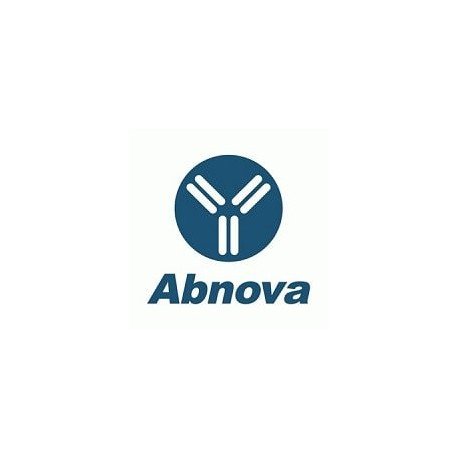Cart 0 Product Products (empty)
No products
To be determined Shipping
0,00 € Total
Prices are tax excluded
Product successfully added to your shopping cart
Quantity
Total
There are 0 items in your cart. There is 1 item in your cart.
Total products (tax excl.)
Total shipping (tax excl.) To be determined
Total (tax excl.)
Data sheet of CDK9 (phospho T29) polyclonal antibody
| Brand | Abnova |
| Product type | Primary antibodies |
| Reactivity | Human,Mouse,Rat |
| Host species | Rabbit |
| Applications | IP,ELISA,WB-Re |
More info about CDK9 (phospho T29) polyclonal antibody
| Brand: | Abnova |
| Reference: | PAB10000 |
| Product name: | CDK9 (phospho T29) polyclonal antibody |
| Product description: | Rabbit polyclonal antibody raised against synthetic phosphopeptide of CDK9. |
| Gene id: | 1025 |
| Gene name: | CDK9 |
| Gene alias: | C-2k|CDC2L4|CTK1|PITALRE|TAK |
| Gene description: | cyclin-dependent kinase 9 |
| Immunogen: | Synthetic phosphopeptide corresponding to residues surrounding T29 of human CDK9. |
| Protein accession: | NP_001252;P50750 |
| Form: | Liquid |
| Recommend dilutions: | ELISA (1:5000-1:24000) Western Blot (1:200-1:2000) The optimal working dilution should be determined by the end user. |
| Storage buffer: | In 20 mM KH2PO4, 150 mM NaCl, pH 7.2 (0.01% sodium azide) |
| Storage instruction: | Store at 4°C. For long term storage store at -20°C. Aliquot to avoid repeated freezing and thawing. |
| Quality control testing: | Antibody Reactive Against Synthetic Peptide. |
| Note: | This product contains sodium azide: a POISONOUS AND HAZARDOUS SUBSTANCE which should be handled by trained staff only. |
| Product type: | Primary antibodies |
| Host species: | Rabbit |
| Antigen species / target species: | Human |
| Specificity: | This antibody is specific to human CDK9 protein phosphorylated at T29. |
| Reactivity: | Human,Mouse,Rat |
| Application image: |  |
| Application image note: | Western blot using CDK9 (phospho T29) polyclonal antibody (Cat # PAB10000) shows detection of phospho-CDK9. 100 ng of purified P-TEFb, which contains CDK9 and its regulatory cyclin T1 subunit, was incubated with ATP in the presence or absence of Brd4, a protein known to induce CDK9 phosphorylation at T29. The primary antibody was used at a 1:1000 dilution. Personal Communication, J. Brady, NCI, Bethesda, MD. |
| Applications: | IP,ELISA,WB-Re |
| Shipping condition: | Dry Ice |
| Publications: | Differential localization and expression of the Cdk9 42k and 55k isoforms.Liu H, Herrmann CH. J Cell Physiol. 2005 Apr;203(1):251-60. |


